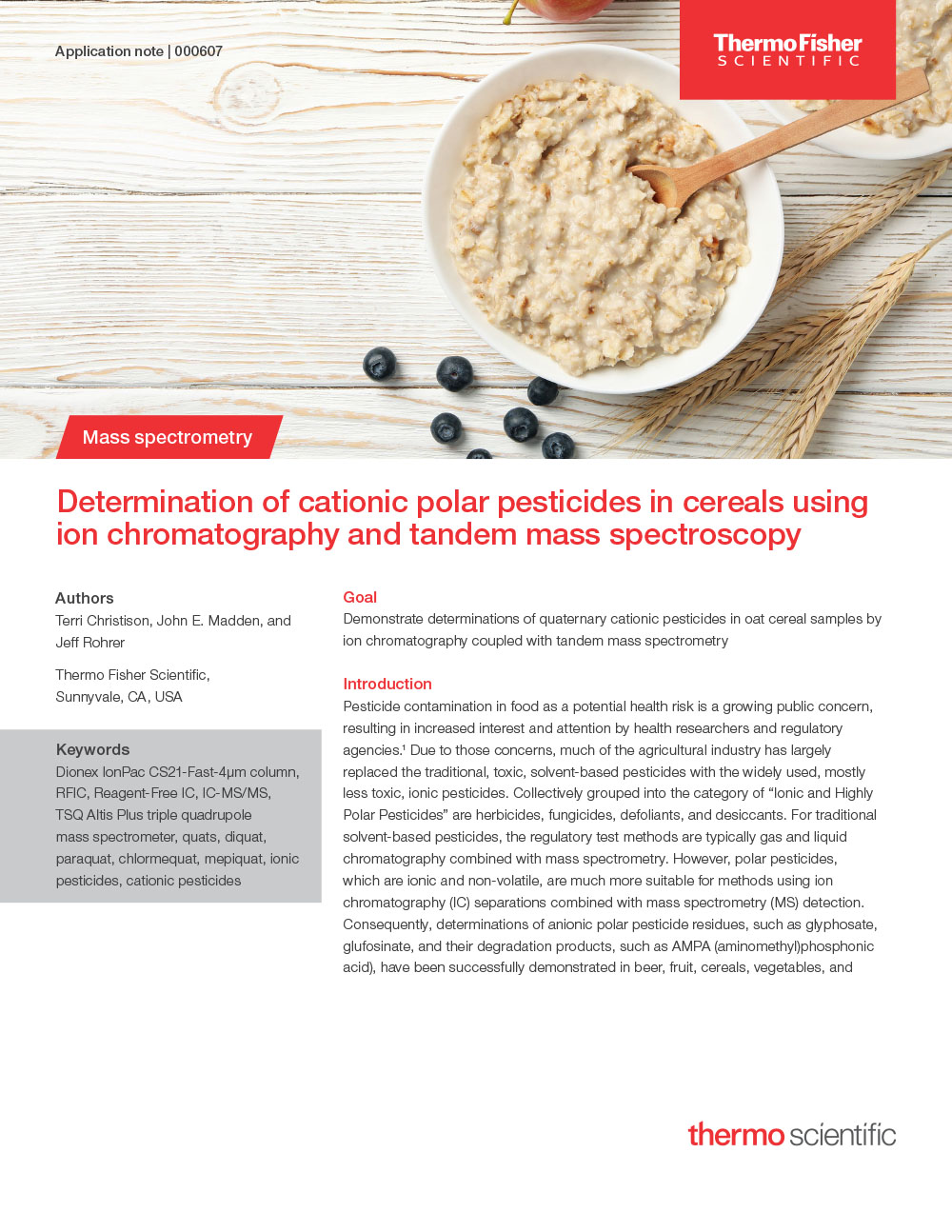Determination of cationic polar pesticides in cereals using ion chromatography and tandem mass spectroscopy
Demonstrate determinations of quaternary cationic pesticides in oat cereal samples by ion chromatography coupled with tandem mass spectrometry.
Pesticide contamination in food as a potential health risk is a growing public concern, resulting in increased interest and attention by health researchers and regulatory agencies. [1] Due to those concerns, much of the agricultural industry has largely replaced the traditional, toxic, solvent-based pesticides with the widely used, mostly less toxic, ionic pesticides. Collectively grouped into the category of “Ionic and Highly Polar Pesticides” are herbicides, fungicides, defoliants, and desiccants. For traditional solvent-based pesticides, the regulatory test methods are typically gas and liquid chromatography combined with mass spectrometry.
However, polar pesticides, which are ionic and non-volatile, are much more suitable for methods using ion chromatography (IC) separations combined with mass spectrometry (MS) detection. Consequently, determinations of anionic polar pesticide residues, such as glyphosate, glufosinate, and their degradation products, such as AMPA (aminomethyl)phosphonic acid), have been successfully demonstrated in beer, fruit, cereals, vegetables and drinking water by the Food Environmental Research Association (FERA, LTD) [2,3] and others [4-15] using IC with MS (tandem MS, high resolution accurate mass (HRAM) MS, or single quadrupole MS). Compared to the anionic highly polar pesticides, determinations of cationic polar pesticide residues have proven more challenging due to their similar chemical structures.




